
Instruction for use
4WayGlide - midi
IMM1007_IFU.Version11.2023-02-02

2
Index
Illustrations ...........................................3
User manual – English .........................4
Bruksanvisning – Svenska ...................9
Bruksanvisning – Norsk .....................14
Brugervejledning – Dansk .................. 19
Käyttöohjeet – Suomi ......................... 24
Gebrauchsanweisung – Deutsch ......29
Gebruiksaanwijzing – Nederlands .....34
Instruction d'utilisation – Francais ....39
Istruzioni per l'uso – Italiano..............44
Instrucciones de uso – Español ........49
See www.etac.com

ES IT FR NL DE FI DA NO SV GB ILL.
3
Illustrations
1234
5678
910 11 12
13 14 15

4
To avoid accidents and injury when moving and handling the
products, read the manual carefully.
The person described as “the user” in this user manual is the
person who is lying or sitting on the product. The carer or carers
are the people who manoeuvre the product.
This symbol appears alongside the text in the
manual. It draws the reader’s attention to points at
which there may be a risk to the health and safety
of the user or carer.
These products comply with the standards applicable for Class
1 products in the Medical Device Regulation (EU) 2017/745 on
medical devices.
At Etac we strive to improve our products all the time and
therefore we reserve the right to make changes to products
without prior warning. All measurements given in illustrations
and similar material are for guidance only and Etac cannot be
held liable for errors and defects.
The information given in this manual, including
recommendations, combinations and sizing, does not apply
to special orders and modications. If the customer makes
adjustments, repairs or combinations not predetermined by
Etac, the Etac CE certication and Etac warranty will not be
valid. If in doubt, please contact Etac.
Warranty: Two-year warranty on material and manufacturing
defects, provided that the product is used correctly.
Expected lifetime: The device has an expected service life of 1
to 2 years under normal use. The service life of the device varies
depending on usage frequency, loads and how often and how it
is washed.
For further information on the Etac transfer range,
see www.etac.com.
In case of an adverse event occurred in relation to the device,
incidents should be reported to your local dealer and the
national competent authority in a timely manner. The local
dealer will forward information to manufacturer.
General
Thank you for choosing an Etac product.
Intended purpose
Intended environment
4WayGlide - midi is a 2-part turning sheet which makes it easy
for carers to move and position a user on a bed, where the user
is partly self-supporting.
Acute care, Long-term care, Home care.
Washing
Do not bleach
Tumbledry
Iron
Do not dryclean
Medical device
Never leave on the oor
Risk of sliding down
Keep out of the sun
Read the user manual
Warning
Production year, month
and day
Batch no./Lot no.
User mass limit =
maximum rated load
The product can be
scrapped according to
national regulations
Manufacturer
CE-marking
Keep dry
Non sterile
Article number
Symbols in general
Manual Cleaning
UKCA marked
Do not add fabric
conditioner

5
ES IT FR NL DE FI DA NO SV GB ILL.
Practical handling
Position the 4Way sheet on the bed.
The “this side up” label should be at the head end (Illustration 1).
Fit the 4Way sheet. You can t the corner straps around the
mattress at the foot end.
The “this side up” label should be at the head end
(Illustrations 2 and 3).
Position the user in the bed so that the hips are within the
green tape marking on the mattress.
Positioning
Use
To unlock the glide system: One carer on each side grasps the
functional handles attached to the glide mattress hanging at the
foot end and pulls them slowly upwards towards the head end.
(Illustration 4).
When the carers feel resistance, they must stop pulling. Then
one carer grasps the functional handles on the opposite side of
the glide mattress, while the other carer helps pull the locking
system up past the hip area (Illustration 5). The carers then do
the same on the opposite side.
If possible, bend the user’s legs (Illustration 6).
The glide system is now unlocked and the user can be moved
in all directions by pulling on the functional handles at the
shoulders and hips (Illustration 6).
When the carers have nished turning the user, the glide system
must be relocked (Illustration 8).
The carers can then move the user onto their side using weight
transference (Illustration 9).
Alternative turning method
If the user is very self-supporting, just one carer can turn the
user (Illustration 10).
Positioning
If the user is to remain on their side after bath/care, the user’s
back can be supported using a positioning wedge or pillow.
(Illustration 11).
Sliding down
Unlock the glide mattress (Illustrations 4 and 5). Then two
carers grasp the straps under the user at the shoulders (and
hips, if necessary) and slowly pull the user upwards using weight
transference (Illustration 12).
Raising the bed headboard
Lock the glide mattress. Remember to “lock” the glide system,
pulling the functional handles towards the foot end. This can
be done by two carers at one time (Illustration 8). The bed
headboard can now be raised without the user sliding down. If
reduced freedom of movement in the upper body is required in
the seated position, you can lock the glide system at both sides
at the shoulders by tting corner straps around the mattress.
The “5 smiles” technique
To ensure the most comfortable position (seated or lying), it
is imperative that the carers remove any tension on the skin
occurring when the user’s head or feet are raised. Loosen the
shoulder blades (Illustration 14).
Loosen the legs (Illustration 15). Finally, the carers must make
sure that the user’s pillow is correctly placed under the user’s
head and neck – rst remove the pillow, shake/plump and
replace.
Seated position
Once the carer has ensured that any tension on the skin is
released, the carer can support the user in the seated position
with positioning wedges and pillows (Illustration 15).

6
Always check the product before use and after washing.
Never use a defective product. If the product shows signs of
wear-and-tear, it must be scrapped.
Read these instructions carefully.
It is important that carers receive instruction in manual
handling. Etac offers advice and training for carers. For further
information, contact Etac.
Always use the correct manual handling techniques
Encourage the user to assist where possible.
To ensure that the user feels safe and that every manual
handling is smooth, always plan the manual handling in
advance.
There is a risk that the user may slide off. Never leave
the user alone on the edge of the bed.
Never leave the product on the oor.
Always conduct a risk assessment, and ensure that
the assistive product can be used for the individual
user and, in combination with other devices, that it is
safe for the user and carers.
It is recommended that the guard rail is in place when
the user is left on the glide system, unless a risk
assessment has found that the user can be safely left
on the glide system without the need of guard rails.
Always lock the glide system when you have
completed the transfer.
Do not use the product as a sling.
To reduce sliding to the side if the head end is elevated t the
corner straps around the bed mattress.
If in any doubt - please contact Etac.
Material:
GlideMattress:
Top side: Polyester/cotton
Filling: Polyester bre
Back side: Nylon
Handles: Polyester.
NylonSheet: Nylon, non-slip.
The product should be checked regularly, preferably each time it
is used, and especially after washing.
Check that there is no damage to seams or fabric.
Never try to repair a product yourself.
Never use a defective product.
Washing instructions:
Recommended to wash the product before use.
Do not use fabric softener.
This product can be cleaned with a solvent-free cleaning agent
with a pH level between 5 and 9, or a 70% disinfection solution.
Material and cleaning
Special features
Notice

7
ES IT FR NL DE FI DA NO SV GB ILL.
Products and accessories
Article no. Product Description Size (mm)
IM140/150 4WayGlide Mattress w/lock - midi W1400xL1500
IM140/150NS 4WayGlide NylonSheet - midi W1700xL1500
Article no. Product Description Size (mm)
IM4313 4WayGlide - midi set. Incl. IM140/150 + IM140/150NS
Set
Article no. Product Description Size (mm)
IM53NS Positioning Wedge S W300xL530xH200
IM53/80NS Positioning Wedge L W300xL800xH200
Combinations

8
Service information
Inspection
First inspection:
• Is the packaging intact?
• Read the label on the packaging and check the article no. and product description
• Check that Short Instruction is enclosed – updated User Manual/Instruction for use can be downloaded from www.etac.com or contact your Etac
Customer Service or the local dealer.
• Check the label on the product - does it include article no., product description, lot/batch no., cleaning instructions and supplier name?
Periodic Inspection:
• Make sure that your Manual transfer system always is in a perfect condition.
• After wash – always check materials, stitching, handles, buckles.
• If the product shows signs of wear and tear, it must be removed from service immediately.
Visual inspection/Check the product:
Ensure that the materials, seams, stitching,
handles, buckles are intact/faultless.
Mechanical load or stress/Test handles:
Draw hard in the handles in opposite directions
and control the material, seams and stitching.
Test buckles:
Lock the buckle and draw in opposite directions,
control the buckle and the stitching.
Stability test:
Try to bend the product verify that it feels rm,
stable and solid.
Test low/high friction:
Place the product on a rm surface or a bed,
place your hands on the material and test the
friction by pushing your hands down into the
product.
Low friction – slides effortlessly
High friction – no sliding/moving
The product can be
scrapped in accordance
with national regulations
Read the
user manual
Check:
Manual transfer aids with handles, straps and buckles: Manual transfer aids with for sitting and lying transfer and
with high or low friction:
Production year, month
and day

9
ES IT FR NL DE FI DA NO SV GB ILL.
Avsett syfte
Avsedd miljö
4WayGlide - midi är ett tvådelat vändningslakan som gör det
enkelt för hjälparna att ytta och placera en brukare på en säng
när brukaren kan hjälpa till själv.
Akutvård, långvarig vård och vård i hemmet.
För att undvika olyckor och personskador vid hantering och
användning av produkten bör du läsa igenom bruksanvisningen
noga.
Den person som beskrivs som ”brukaren” i dessa instruktioner
är personen som ligger eller sitter på produkten. Hjälparna är de
personer som manövrerar produkten.
Den här symbolen förekommer i manualen
tillsammans med text. Den vill påkalla
uppmärksamhet när brukarens eller hjälparens
säkerhet kan äventyras.
Produktene overholder standardene for Klasse 1-produkter i
forskrift om medisinsk utstyr (EU) 2017/745 Medisinsk utstyr.
På Etac strävar vi efter att hela tiden förbättra våra produkter.
Därför förbehåller vi oss rätten att göra ändringar av
produkterna utan att meddela detta i förväg. Alla mått som
anges på bilder och i liknande material är endast vägledande.
Etac kan inte hållas ansvariga för felaktigheter och brister.
Informationen i dessa instruktioner, inklusive
rekommendationer, kombinationer och storlekar, gäller inte
för specialbeställningar och modikationer. Om kunden gör
några ändringar, reparationer eller kombinationer som inte har
godkänts av Etac, upphör Etacs CE-certiering och garanti att
gälla. Kontakta Etac om du har några frågor.
Garanti: Två års garanti för material- och tillverkningsfel, under
förutsättning att produkten används på rätt sätt.
Förväntad livslängd: Enheten har en förväntad livslängd på
1 till 2 år vid normal användning. Enhetens livslängd varierar
beroende på användningsfrekvens, belastning och hur ofta och
hur den rengörs.
Mer information om Etacs sortiment av föryttningsprodukter
nns på www.etac.com.
I händelse av en biverkning i samband med produkten ska
incidenter rapporteras till din lokala återförsäljare och den
nationella behöriga myndigheten i tid. Den lokala återförsäljaren
vidarebefordrar information till tillverkaren.
Allmänt
Tack för att du har valt en produkt från Etac.
Tvätt
Ingen blekning
Torktumling
Strykning
Ingen kemtvätt
Medicinsk enhet
Lämna aldrig på golvet
Nedglidningsrisk
Skydda från solljus
Läs bruksanvisningen
Varning
Tillverkningsdatum: år,
månad och dag
Batchnr/partinr
Största massa för
brukare = maximal
belastning
Produkten kan avfalls-
hanteras i enlighet med
nationella bestämmelser
Tillverkare
CE-märkning
Hålls torr
Icke steril
Artikelnummer
Allmänna symboler
Manuell rengöring
UKCA-märkt
Använd inte sköljmedel

10
Praktiskt handhavande
Placera 4Way-lakanet på sängen.
Etiketten ”denna sida upp” ska placeras i huvudänden (bild 1).
Passa in 4Way-lakanet. Hörnremmarna kan fästas runt
madrassen i fotänden.
Etiketten ”denna sida upp” ska placeras i huvudänden (bild 2
och 3).
Placera brukaren i sängen så att höfterna är innanför den gröna
tejpmarkeringen på madrassen.
Placering
Användning
Låsa upp glidsystemet: En hjälpare på varje sida tar tag i
funktionshandtagen som är fästa vid glidmadrassens fotände
och drar dem långsamt uppåt mot huvudänden.
(Bild 4.)
När hjälparna känner motstånd måste de sluta dra. Därefter
tar en hjälpare tag i funktionshandtagen på motsatt sida av
glidmadrassen och den andre hjälparen hjälper till att dra upp
låssystemet förbi höftområdet (bild 5). Därefter gör hjälparna
likadant från motsatt sida.
Böj om möjligt på brukarens ben (bild 6).
Glidsystemet är nu upplåst och brukaren kan yttas i alla
riktningar genom att dra i funktionshandtagen vid axlarna och
höfterna (bild 6).
När hjälparna är klara med att vända brukaren måste
glidsystemet låsas igen (bild 8).
Hjälparna kan sedan ytta brukaren till sidoläge med hjälp av
viktöverföring (bild 9).
Alternativ vändningsmetod
Om brukaren kan hjälpa till mycket själv räcker det med en
hjälpare för att vända brukaren (bild 10).
Placering
Om brukaren ska vara kvar i sidoläge efter bad/omvårdnad kan
brukarens rygg stödjas med Positioning Wedge eller en kudde.
(Bild 11.)
Glida nedåt
Lås upp glidmadrassen (bild 4 och 5). Två hjälpare tar sedan
tag i remmarna under brukaren vid axlarna (och höfterna, vid
behov) och drar sedan långsamt brukaren uppåt med hjälp av
viktöverföring (bild 12).
Höja huvudänden
Lås glidmadrassen. Kom ihåg att ”låsa” glidsystemet genom att
dra funktionshandtagen mot fotänden. Detta kan genomföras av
två hjälpare samtidigt (bild 8). Huvudänden går nu att höja utan
att brukaren glider nedåt. Om det krävs minskad rörelsefrihet
i överkroppen i sittande läge kan glidsystemet låsas på båda
sidor av axlarna genom att fästa hörnremmar runt madrassen.
”5 smiles”-tekniken
För att säkerställa en så bekväm position som möjligt (sittande
eller liggande) är det viktigt att hjälparna ser till att huden
inte är sträckt när brukarens fötter eller huvud höjs. Se till att
skulderbladen är avslappnade (bild 14).
Se till att benen är avslappnade (bild 15). Slutligen måste
hjälparna se till att brukarens kudde är korrekt placerad under
brukarens huvud och nacke – ta först bort kudden, skaka/uffa
och lägg tillbaka.
Sittande ställning
När hjälparen har sett till att huden inte är sträckt någonstans
kan han/hon stötta brukaren i sittande ställning med
Positioning Wedge eller kuddar (bild 15).

11
ES IT FR NL DE FI DA NO SV GB ILL.
Kontrollera alltid produkten före användning och efter rengöring.
Använd aldrig en defekt produkt. Om produkten är sliten måste
den kasseras.
Läs dessa instruktioner noga.
Det är viktigt att hjälparna får instruktioner i manuell
föryttningsteknik. Etac erbjuder råd och utbildning för hjälpare.
Kontakta Etac om du vill veta mer.
Använd alltid rätt föryttningsteknik.
Uppmuntra brukaren att hjälpa till så mycket som möjligt.
Planera alltid föryttningen i förväg så att brukaren känner sig
trygg och föryttningen går smidigt.
Det nns risk att brukaren kan glida av. Lämna aldrig
brukaren ensam på sängkanten.
Lämna aldrig produkten på golvet.
Genomför alltid en riskbedömning, kontrollera
att hjälpmedlet går att använda hos den enskilde
brukaren och se till att det är säkert för brukaren och
hjälparna att använda det tillsammans med andra
hjälpmedel.
Vi rekommenderar att sängens grindar sitter på plats
när brukaren lämnas på glidsystemet, såvida man
inte har konstaterat i en riskbedömning att det är
säkert att lämna brukaren på glidsystemet utan att
grindar sitter på plats.
Lås alltid glidsystemet när föryttningen är färdig.
Använd inte produkten som en lyftsele.
Du kan minska risken att brukaren glider åt sidan när
huvudänden är upphöjd genom att fästa hörnremmar kring
bäddmadrassen.
Kontakta Etac om du har några frågor.
Material:
Glidmadrass:
Ovansida: Polyester/bomull
Stoppning: Polyesterber
Baksida: Nylon
Handtag: Polyester.
NylonSheet: Nylon, non-slip.
Produkten bör kontrolleras regelbundet, helst varje gång den
ska användas och särskilt efter tvätt.
Kontrollera att sömmar och tyg inte är skadade.
Försök aldrig att reparera en produkt själv.
Använd aldrig en defekt produkt.
Tvättinstruktioner:
Tvätt rekommenderas före användning.
Använd inte sköljmedel.
Produkten kan rengöras med rengöringsmedel utan
lösningsmedel och med pH-värde 5–9 eller med 70 % tvättsprit.
Material och rengöring
Särskilda egenskaper
Information

12
Produkter och tillbehör
Artikelnr Produktbeskrivning Storlek (mm)
IM140/150 4WayGlide Mattress w/lock - midi W1400xL1500
IM140/150NS 4WayGlide NylonSheet - midi W1700xL1500
Artikelnr Produktbeskrivning Storlek (mm)
IM53NS Positioning Wedge S W300xL530xH200
IM53/80NS Positioning Wedge L W300xL800xH200
Kombinationer
Artikelnr Produktbeskrivning Storlek (mm)
IM4313 4WayGlide - midi set. Inkl. IM140/150 + IM140/150NS
Set

13
ES IT FR NL DE FI DA NO SV GB ILL.
Serviceinformation
Inspektion
Första inspektion:
• Är förpackningen oskadad?
• Läs etiketten på förpackningen och kontrollera artikelnummer och produktbeskrivning.
• Kontrollera att Kortinformationen har bifogats en aktuell bruksanvisning kan laddas ned från
www.etac.se eller beställas via Etacs kundtjänst eller din lokala återförsäljare
• Kontrollera etiketten på produkten – innehåller den artikelnummer, produktbeskrivning, parti-/batchnummer,
rengöringsinstruktioner och leverantörens namn?
Regelbundna inspektioner:
• Kontrollera att det manuella överyttningssystemet alltid är i perfekt skick.
• Kontrollera alltid material, sömmar, handtag och spännen efter rengöring.
• Om produkten visar spår av förslitning måste den omedelbart tas ur bruk.
Visuell inspektion/kontrollera produkten:
Kontrollera att material, sömmar, stygn,
handtag och spännen är hela/utan fel.
Mekanisk belastning/test av handtag:
Dra hårt i handtagen åt motsatt håll och
kontrollera material, sömmar och stygn.
Test av spännen:
Stäng spännet och dra åt motsatt
håll. Kontrollera spännet och stygnen.
Stabilitetstest:
Försök att böja produkten för att kontrollera
att den känns fast och stabil.
Testa låg/hög friktion:
Placera produkten på en fast yta eller säng,
lägg händerna på materialet och testa
friktionen genom att trycka händerna ned
mot produkten.
Låg friktion – glider enkelt
Hög friktion – glider/rör sig inte
Produkten kan avfalls-
hanteras i enlighet med
nationella bestämmelser
Läs bruks-
anvisningen
Kontrollera:
Hjälpmedel för manuell föryttning med handtag, remmar
och spännen:
Hjälpmedel för manuell föryttning, sittande och liggande med hög
eller låg friktion:
Produksjonsår, måned og
dag

14
Generelt
Takk for at du har valgt et produkt fra Etac.
Les bruksanvisningen grundig for å unngå uhell og skader under
ytting og bruk av produktene.
Personen som betegnes som ”brukeren” i denne bruksanvisningen
er personen som ligger i, eller sitter på, produktet. Assistenten eller
assistentene er personene som manøvrerer produktet.
Dette symbolet vises ved siden av teksten i bruks-
anvisningen. Den trekker leserens oppmerksomhet
mot punkter hvor det kan være fare for brukerens
eller assistentens helse eller sikkerhet.
Produktene overholder standardene for Klasse 1-produkter i
Forskrift om medisinsk utstyr (EU) 2017/745 Medisinsk utstyr.
Hos Etac arbeider vi kontinuerlig med å forbedre produktene
våre. Vi forbeholder oss derfor retten til å endre produktene uten
ytterligere forvarsel. Alle mål i illustrasjoner og liknende materiell
er kun veiledende. Etac er ikke ansvarlig for feil og defekter.
Innholdet i denne bruksanvisningen, inkludert anbefalinger,
kombinasjoner og størrelser, gjelder ikke ved spesialbestillinger
eller modikasjoner. Hvis kunden foretar justeringer, reparasjoner
eller kombinasjoner som ikke er avtalt med Etac på forhånd, vil
Etacs CE-sertisering og garanti være ugyldig. Kontakt Etac hvis
du er i tvil.
Garanti: To års garanti mot material- og produksjonsfeil forutsatt
at produktet brukes på riktig måte.
Forventet levetid: Utstyret har en forventet levetid på 1 til 2
år under normal bruk. Utstyrets levetid varierer avhengig av
brukshyppighet, belastning og hvor ofte og hvordan det blir
vasket.
Se www.etac.no for mer informasjon om Etacs
forytningshjelpemidler.
Hvis det skulle oppstå en uønsket hendelse relatert til utstyret,
skal hendelsen rapporteres til din lokale forhandler og nasjonale
myndigheter innen rimelig tid. Den lokale forhandleren vil
videresende informasjon til produsenten.
Generelle symboler
Tiltenkt bruk
Bruksmiljø
4WayGlide - midi er et vendelaken i to deler som gjør det enkelt
for assistenter å ytte og posisjonere en bruker i en seng når
brukeren kan bidra litt selv.
Akuttmottak, sykehus, hjemmesykepleie
Vasking
Må ikke blekes
Tørkes i tørketrommel
Strykes
Må ikke renses
Medisinsk utstyr
Etterlat ikke produktet
på gulvet
Fare for nedglidning
Må ikke utsettes
for sollys
Les bruksanvisningen
Advarsel
Produksjonsår, måned
og dag
Batchnummer /
LOT-nummer.
Maks brukervekt
= maksimalt testet
belastning
Produktet kan kasseres
i henhold til gjeldende
regelverk.
Produsent
CE-merking
Må holdes tørr
Ikke steril
Artikkelnummer
Vaskes for hånd
UKCA-merketIkke bruk tøymykner

15
ES IT FR NL DE FI DA NO SV GB ILL.
Praktisk bruk
Plasser 4Way-lakenet på sengen.
Etiketten ”denne siden opp” skal være ved hodeenden
(illustrasjon 1).
Fest 4Way-lakenet. Du kan feste hjørnestroppene rundt
madrassen i fotenden.
Etiketten ”denne siden opp” skal være ved hodeenden
(illustrasjon 2 og 3).
Plasser brukeren i sengen slik at hoftene ligger innenfor de
grønne tapemerkene på madrassen.
Plassering
Bruk
Låse opp glidesystemet: En assistent på hver side griper tak i
håndtakene på glidemadrassen i fotenden og trekker dem sakte
opp mot hodeenden. (Illustrasjon 4).
Assistenten må slutte å trekke når han eller hun merker
motstand. Deretter tar en assistent tak i håndtakene på motsatt
side av glidemadrassen, og den andre assistenten hjelper til
med å trekke låsesystemet opp forbi hoftene (illustrasjon 5).
Assistentene gjør det samme på motsatt side.
Bøy brukerens bein, hvis det er mulig (illustrasjon 6).
Nå er glidesystemet låst opp, og brukeren kan beveges i alle
retninger ved å trekke i håndtakene ved skuldrene og hoftene
(illustrasjon 6).
Når assistentene er ferdige med å vende brukeren,
må glidesystemet låses igjen (illustrasjon 8).
Assistenten kan forytte brukeren til sidestilling ved hjelp av
vektoverføring (illustrasjon 9).
Alternativ vendemetode
Hvis brukeren kan hjelpe til selv, kan en assistent vende
brukeren alene (illustrasjon 10).
Plassering
Hvis brukeren skal ligge i sidestilling etter bading/stell,
kan brukerens rygg støttes ved hjelp av en skråpute eller en
vanlig pute. (Illustrasjon 11).
Gli ned
Lås opp glidemadrassen (illustrasjon 4 og 5). To assistenter
tar tak i stroppene under brukeren ved skuldernivå (og hofter,
ved behov) og trekker brukeren sakte oppover ved hjelp av
vektoverføring (illustrasjon 12).
Heve hodeenden
Lås glidemadrassen. Husk å ”låse” glidesystemet ved å trekke
håndtakene ned mot fotenden. Dette kan gjøres av begge
assistenter samtidig (illustrasjon 8). Nå kan hodeenden
heves uten at brukeren glir ned. Hvis brukeren har begrenset
bevegelighet i overkroppen i sittende stilling, kan du låse
glidesystemet på begge sider ved skuldrene ved å feste
hjørnestropper rundt madrassen.
”5 smil”-teknikken
For å gi brukeren en så komfortabel stilling som mulig (sittende
eller liggende) er det viktig at assistenten kontrollerer at
brukerens hud ikke strammes når hodet eller føttene heves.
Løsne skulderbladene (illustrasjon 14).
Løsne føttene (illustrasjon 15). Til slutt må assistenten
kontrollere at brukerens pute er riktig plassert under brukerens
hode og nakke. Fjern puten, rist den opp og legg den på plass
igjen.
Sittende stilling
Når assistenten har sørget for at brukerens hud ikke strammes,
kan assistenten støtte brukeren i sittende stilling ved hjelp av
skråputer og vanlige puter (illustrasjon 15).

16
Produktet må alltid kontrolleres før bruk og etter rengjøring.
Hvis produktet er defekt, må det ikke brukes. Hvis produktet
virker slitt, må det kastes.
Les bruksanvisningen grundig.
Det er viktig at assistenter får opplæring i manuell forytning.
Etac tilbyr rådgivning og opplæring av assistenter. Kontakt Etac
for ytterligere informasjon.
Korrekte teknikker for manuell forytning må alltid brukes.
Brukeren kan oppfordres til å bidra når det er mulig.
Den manuelle forytningen må alltid planlegges på forhånd for å
sikre at brukeren er trygg og at all manuell forytning foregår så
smidig som mulig.
Brukeren kan gli av utstyret. Brukeren må aldri
forlates på sengekanten.
Produktet må aldri forlates på gulvet.
Det må alltid foretas en risikovurdering, og det må
kontrolleres at hjelpemiddelet kan brukes sammen
med den individuelle brukeren og i kombinasjon med
annet utstyr slik at både brukeren og assistenten er
trygg.
Det anbefales å bruke gavler når brukeren ligger på
glidesystemet over tid, med mindre en risikovurdering
har avdekket at brukeren kan ligge på glidesystemet
uten gavler.
Glidesystemet må alltid låses når forytningen er
fullført.
Ikke bruk produktet som løftesele.
Fest hjørnestroppene rundt madrassen for å redusere
sideglidning i sengen hvis hodeenden er hevet.
Kontakt Etac hvis du er i tvil.
Materiale og rengjøring
Materiale:
Glidemadrass:
Overside: Polyester/bomull
Fyll: Polyesterber
Bakside: Nylon
Håndtak: Polyester.
NylonSheet: Nylon, sklisikring.
Produktet skal kontrolleres regelmessig, fortrinnsvis ved hver
bruk, og ekstra nøye etter vask.
Kontroller at sømmer og stoff ikke er skadet.
Du må aldri forsøke å reparere produktet selv.
Hvis produktet er defekt, må det ikke brukes.
Vaskeinstruks:
Det anbefales og vaske produktet før bruk.
Ikke bruk tøymykner.
Produktet kan vaskes med et løsemiddelfritt rengjøringsmiddel
med pH mellom 5 og 9, eller desinseres med 70 % konsentrasjon.
Spesialfunksjoner
Merknad

17
ES IT FR NL DE FI DA NO SV GB ILL.
Produkter og tilbehør
Artikkelnr. Beskrivelse Størrelse (mm)
IM140/150 4WayGlide Mattress w/lock - midi W1400xL1500
IM140/150NS 4WayGlide NylonSheet - midi W1700xL1500
Artikkelnr. Beskrivelse Størrelse (mm)
IM53NS Positioning Wedge S W300xL530xH200
IM53/80NS Positioning Wedge L W300xL800xH200
Kombinasjoner
Artikkelnr. Beskrivelse Størrelse (mm)
IM4313 4WayGlide - midi set. Incl. IM140/150 + IM140/150NS
Sett

18
Serviceinformasjon
Inspeksjon
Første gangs inspeksjon:
• Er emballasjen hel?
• Les etiketten på emballasjen, og kontroller artikkelnummer og produktbeskrivelse.
• Kontroller at den kort brukerveiledning er vedlagt. Oppdatert bruksanvisning kan lastes ned fra www.etac.no. Du kan også kontakte
Etacs kundeservice eller din forhandler.
• Kontroller etiketten på produktet. Inneholder den artikkelnummer, produktbeskrivelse, LOT-/batchnummer, vaskeanvisning og
leverandørens navn?
Periodisk inspeksjon:
• Kontroller at det manuelle forytningshjelpemiddelet alltid er i god stand.
• Materialer, sømmer, håndtak og spenner må alltid kontrolleres etter rengjøring.
• Hvis produktet har tegn på slitasje, må det umiddelbart tas ut av bruk.
Visuell inspeksjon / kontroller produktet:
Kontroller at materialene, sømmene,
håndtakene og stroppene er hele og uten feil.
Mekanisk belastning eller stress /
Test av håndtak:
Trekk hardt i håndtakene i ere retninger,
og kontroller materialet og sømmene.
Test av spenner:
Fest spennene, og trekk i ere retninger.
Kontroller spennen og sømmene.
Stabilitetstest:
Forsøk å bøye produktet. Kontroller at det
føles fast, stabilt og solid.
Test lav/høy friksjon:
Plasser produktet på fast underlag eller en
seng, legg hendene på materialet og test
friksjonen ved å presse hendene dine ned
i produktet.
Lav friksjon – glir uten motstand
Høy friksjon – ingen glidning/bevegelse
Produktet kan kasseres
i henhold til gjeldende
regelverk.
Les bruks-
anvisningen
Kontroller:
Manuelle forytningshjelpemidler med håndtak, stropper
og spenner:
Manuelle forytningshjelpemidler for sittende og liggende
forytning med høy eller lav friksjon:
Produksjonsår, måned og
dag

19
ES IT FR NL DE FI DA NO SV GB ILL.
Generelt
Tak, fordi du valgte et produkt fra Etac.
For at undgå ulykker og skader i forbindelse med håndtering
og brug af produkterne, skal denne manual læses grundigt
igennem.
Brugeren i denne manual er den person, der ligger eller sidder
på produktet. Hjælperen er den person, der manøvrerer
produktet.
Dette symbol forekommer i manualen sammen med
teksten for at gøre opmærksom på tidspunkter,
hvor der er risiko for brugerens eller hjælpernes
sikkerhed.
Produktene overholder standardene for Klasse 1-produkter i
Forordningen om medicinsk udstyr (EU) 2017/745 medicinsk
udstyr
Hos Etac bestræber vi os på kontinuerligt at forbedre vores
produkter. Vi forbeholder os derfor ret til at ændre produkterne
uden forudgående meddelelse. Alle mål, der angives på
illustrationer eller andet materiale, er kun vejledende, og der
tages forbehold for fejl og mangler.
Informationen i denne manual, inkl. anbefalinger, kombinationer
og størrelser, gælder ikke for specialtilpasninger og
modikationer. Hvis kunden foretager ændringer, reparationer
eller kombinationer, der ikke er godkendt af Etac, bortfalder
Etacs CE-mærkning, og Etacs garanti ophører. Ved tvivl kontakt
venligst Etac.
Garanti: To år på materiale- og produktionsfejl ved korrekt
anvendelse af produktet.
Forventet levetid: Produktet har en forventet levetid på 1-2 år
ved normal brug. Levetiden for produktet varierer afhængigt af
brugshyppighed, belastninger samt hvor ofte og hvordan det er
blevet vasket.
For yderligere information om Etacs sortiment indenfor
forytning se www.etac.com.
Hvis der opstår en utilsigtet hændelse i forbindelse med
produktet, skal hændelsen indberettes til den lokale forhandler
og den nationale kompetente myndighed uden unødig
forsinkelse. Den lokale forhandler vil videresende oplysningerne
til producenten.
Tilsigtet formål
Tilsigtet miljø
4WayGlide – midi er et todelt vendelagen, der benyttes i
situationer, hvor det kan være vanskeligt at forytte og lejre
en bruger i sengen, og hvor brugeren er delvis selvhjulpen.
Hospitaler, institutioner og hjemme.
Manual rensning
UKCA-mærket
Tilsæt ikke
skyllemiddel
Symboler
Vask
Ingen blegning
Tørretumbling
Strygning
Ingen rens
Medicinsk udstyr
Efterlad aldrig på gulv
Nedglidningsrisiko
Beskyt mod sollys
Læs manual
Advarsel
Produktionsår, -måned
og -dag
Batch-/lotnummer
Maks. brugervægt
= maks. nominel
belastning
Produktet bortskaffes
i henhold til nationale
regler
Producent
CE-mærkning
Opbevares tørt
Ikke-steril
Artikelnummer

20
Praktisk håndtering
4Way-lagnet placeres i sengen.
Mærkatet med ”This side up” placeres ved hovedgæret
(Illustration 1).
4Way-lagnet monteres, evt. kan hjørnestropperne i fodenden
låses ned om madrassen.
Mærkatet med ”This side up” placeres ved hovedgærdet
(Illustration 2 og 3).
Brugeren placeres i sengen, så hoftepartiet er placeret indenfor
den grønne kantbåndsmarkering på madrassen.
Placering
Anvendelse
Sådan låses glidesystemet op: En hjælper på begge sider tager
fat i funktionshåndtagene på glidemadrassen, der hænger i
fodenden, og trækker langsomt op mod hovedenden.
(Illustration 4) Når hjælperne møder modstand, stopper
man med at trække. Den ene hjælper tager nu fat i
funktionshåndtagene i modsatte side af madrassen, mens den
anden hjælper trækker låsen op forbi hoftepartiet (Illustration 5)
Herefter gør man det samme modsat.
Bøj gerne brugerens ben, hvis det er muligt (Illustration 6).
Systemet er nu låst op, og brugeren kan nu foryttes i alle
retninger ved at trække i funktionshåndtagene ved skuldre og
hofte (Illustration 6).
Når brugeren ikke skal foryttes mere, låses systemet.
(Illustration 8).
Ved hjælp af vægtoverføring kan brugeren nu vendes om på
siden (Illustration 9).
Alternativ vending
Er brugeren meget selvhjulpen, kan en enkelt hjælper vende
brugeren (Illustration 10).
Lejring
Skal brugeren forblive på siden efter endt badning/pleje, kan
en kile eller lejringspude placeres i ryggen som ekstra støtte
(Illustration 11).
Nedglidning
Madrassen låses op (Illustration 4 og 5). To hjælpere tager fat
i stropperne under brugeren ved skuldre og eventuelt hofte
og trækker via vægtoverføring langsomt brugeren højere op
(illustration 12).
Elevering af hovedgærde
Glidemadrassen låses. Husk at ”låse” glidesystemet ved at
trække funktionshåndtagene mod fodenden. Dette kan gøres
samtidigt af to hjælpere (Illustration 8). Hovedgærdet kan nu
eleveres, uden at brugeren glider ned. Ønsker man ikke så stor
bevægelsesfrihed i overkroppen i forbindelse med siddende
stilling, kan man låse glidesystemet i begge sider ved skuldrene
ved at montere hjørnestropper om madrassen.
Teknikken med ”de fem smil”
For at sikre brugeren den mest komfortable siddende eller
liggende position er det meget vigtigt, at hjælperne fjerne
spændinger i huden, som brugerne får, når hovedgærde- og
fodende eleveres. Skulderbladene løsnes (Illustration 13).
Benene løsnes (Illustration 14), og endeligt sikrer hjælperne,
at hovedpuden er placeret korrekt under brugerens hoved og
nakke – den fjernes, rystes og genplaceres.
Siddende position
Efter at hjælperen har sikret, at spændingerne er væk fra
huden, kan man støtte brugeren med kiler og lejringspuder i
siddende position (Illustration 15).
La pagina si sta caricando...
La pagina si sta caricando...
La pagina si sta caricando...
La pagina si sta caricando...
La pagina si sta caricando...
La pagina si sta caricando...
La pagina si sta caricando...
La pagina si sta caricando...
La pagina si sta caricando...
La pagina si sta caricando...
La pagina si sta caricando...
La pagina si sta caricando...
La pagina si sta caricando...
La pagina si sta caricando...
La pagina si sta caricando...
La pagina si sta caricando...
La pagina si sta caricando...
La pagina si sta caricando...
La pagina si sta caricando...
La pagina si sta caricando...
La pagina si sta caricando...
La pagina si sta caricando...
La pagina si sta caricando...
La pagina si sta caricando...
La pagina si sta caricando...
La pagina si sta caricando...
La pagina si sta caricando...
La pagina si sta caricando...
La pagina si sta caricando...
La pagina si sta caricando...
La pagina si sta caricando...
La pagina si sta caricando...
La pagina si sta caricando...
La pagina si sta caricando...
-
 1
1
-
 2
2
-
 3
3
-
 4
4
-
 5
5
-
 6
6
-
 7
7
-
 8
8
-
 9
9
-
 10
10
-
 11
11
-
 12
12
-
 13
13
-
 14
14
-
 15
15
-
 16
16
-
 17
17
-
 18
18
-
 19
19
-
 20
20
-
 21
21
-
 22
22
-
 23
23
-
 24
24
-
 25
25
-
 26
26
-
 27
27
-
 28
28
-
 29
29
-
 30
30
-
 31
31
-
 32
32
-
 33
33
-
 34
34
-
 35
35
-
 36
36
-
 37
37
-
 38
38
-
 39
39
-
 40
40
-
 41
41
-
 42
42
-
 43
43
-
 44
44
-
 45
45
-
 46
46
-
 47
47
-
 48
48
-
 49
49
-
 50
50
-
 51
51
-
 52
52
-
 53
53
-
 54
54
in altre lingue
- français: Immedia 4WayGlide Midi Manuel utilisateur
- español: Immedia 4WayGlide Midi Manual de usuario
- Deutsch: Immedia 4WayGlide Midi Benutzerhandbuch
- Nederlands: Immedia 4WayGlide Midi Handleiding
- dansk: Immedia 4WayGlide Midi Brugermanual
- eesti: Immedia 4WayGlide Midi Kasutusjuhend
- svenska: Immedia 4WayGlide Midi Användarmanual
Documenti correlati
-
Immedia IMM1045 Manuale utente
-
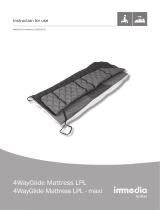 Immedia 4WayGlide LPL Manuale utente
Immedia 4WayGlide LPL Manuale utente
-
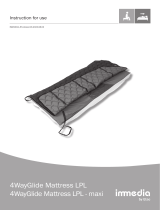 Immedia 4WayGlide LPL Manuale utente
Immedia 4WayGlide LPL Manuale utente
-
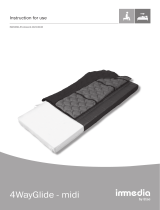 Immedia 4WayGlide Midi Manuale utente
Immedia 4WayGlide Midi Manuale utente
-
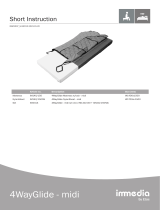 Immedia 4WayGlide Midi Istruzioni per l'uso
Immedia 4WayGlide Midi Istruzioni per l'uso
-
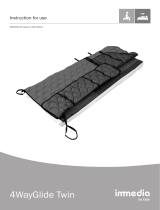 Immedia 4WayGlide LPL Manuale utente
Immedia 4WayGlide LPL Manuale utente
-
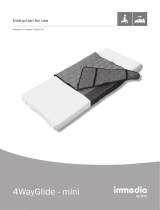 Immedia 4WayGlide Mini Manuale utente
Immedia 4WayGlide Mini Manuale utente
-
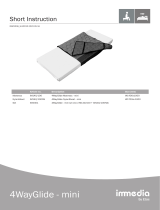 Immedia IM140 Istruzioni per l'uso
Immedia IM140 Istruzioni per l'uso
-
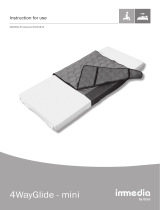 Immedia 4WayGlide Mini Manuale utente
Immedia 4WayGlide Mini Manuale utente
-
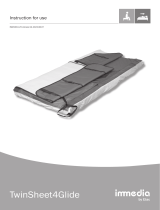 Immedia TwinSheet4Glide Manuale utente
Immedia TwinSheet4Glide Manuale utente






























































